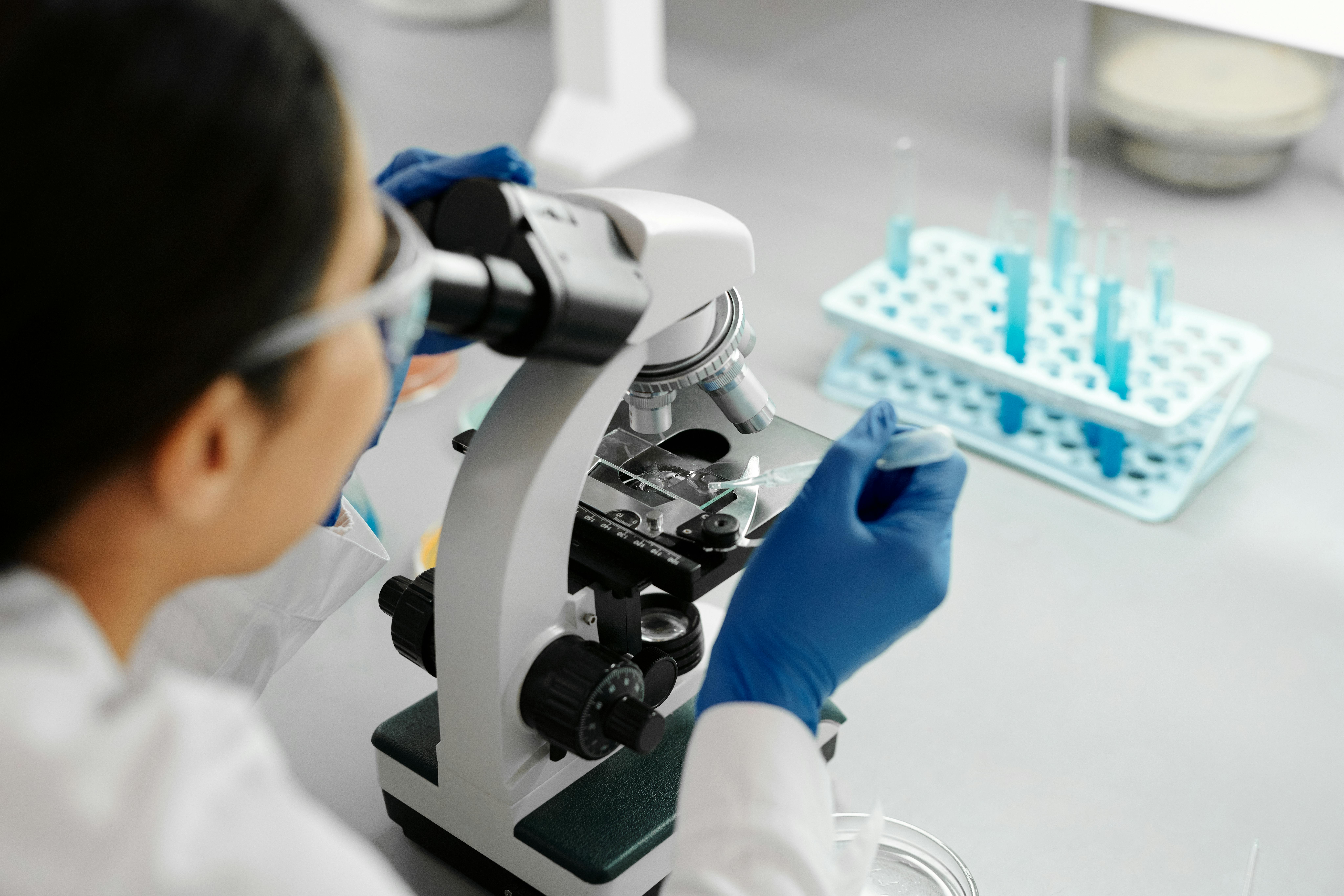The frontier of personal health is shifting from doctor’s offices to home laboratories, where individuals take control of their genetic destinies through biohacking and DIY genetics.
🧬 The Revolution Happening in Your Living Room
We’re living through an unprecedented moment in human history. For the first time ever, the tools that were once exclusive to elite research institutions are now accessible to curious individuals willing to explore their biological blueprints. The convergence of affordable DNA sequencing, open-source scientific protocols, and a growing community of citizen scientists has democratized genetics in ways that seemed like science fiction just a decade ago.
Biohacking represents more than just a trend—it’s a fundamental shift in how we approach human optimization. This movement encompasses everything from simple lifestyle modifications to sophisticated genetic interventions, all unified by a single principle: taking personal responsibility for upgrading your biology.
The DIY genetics revolution challenges traditional medical gatekeeping while raising important questions about safety, ethics, and the future of human enhancement. As more people gain access to genetic information and modification tools, we’re witnessing the emergence of a new paradigm where individuals become active participants in their evolutionary journey rather than passive recipients of inherited traits.
Understanding Your Genetic Blueprint 🔬
Your DNA contains approximately 3 billion base pairs of information—essentially a comprehensive instruction manual for building and operating your body. Until recently, accessing this information required expensive laboratory equipment and specialized expertise. Today, consumer genetic testing services have made it possible to decode significant portions of your genome for less than the cost of a smartphone.
These genetic insights reveal predispositions to various health conditions, athletic capabilities, nutritional needs, and even personality traits. However, understanding your genetic code is just the beginning. The real power lies in knowing how to interpret this data and implement actionable strategies based on your unique biological profile.
The Epigenetic Layer: Where Genes Meet Environment
Perhaps the most exciting discovery in modern genetics is epigenetics—the study of how environmental factors influence gene expression without changing the underlying DNA sequence. This means you’re not locked into a predetermined genetic fate. Through strategic lifestyle interventions, you can literally turn genes on or off, activating beneficial pathways while silencing problematic ones.
Epigenetic modifications occur through several mechanisms including DNA methylation, histone modification, and non-coding RNA activity. These processes respond to factors within your control: nutrition, exercise, sleep quality, stress management, and environmental exposures. This represents the most accessible entry point for most people interested in genetic optimization.
🎯 Practical Biohacking Strategies for Genetic Optimization
Biohacking exists on a spectrum from beginner-friendly interventions to advanced protocols requiring significant expertise. The key is starting with foundational practices that offer the highest return on investment before progressing to more sophisticated approaches.
Nutritional Genomics: Eating for Your DNA
Nutrigenomics explores how specific nutrients interact with your genetic code. Certain genetic variations affect how efficiently you metabolize different macronutrients, vitamins, and minerals. For instance, variations in the MTHFR gene impact folate metabolism, while FTO gene variants influence fat storage and satiety signaling.
Armed with genetic testing results, you can customize your diet to compensate for genetic inefficiencies. Someone with reduced ability to convert beta-carotene to active vitamin A might prioritize preformed vitamin A sources like liver and egg yolks. Those with caffeine metabolism variants might adjust their coffee consumption timing to optimize both performance and sleep quality.
The Mediterranean diet, ketogenic protocols, carnivore approaches, and plant-based nutrition each interact differently with various genetic profiles. There’s no universally optimal diet—only the optimal diet for your unique genetic configuration.
Exercise Programming Based on Genetic Markers
Your genetic profile significantly influences athletic performance potential, injury risk, and recovery requirements. The ACTN3 gene, often called the “speed gene,” affects fast-twitch muscle fiber composition. Meanwhile, ACE gene variants influence cardiovascular adaptation and endurance capacity.
Understanding these genetic factors allows for precision exercise programming. Someone genetically predisposed to power and strength might prioritize resistance training and explosive movements, while someone with endurance-favoring genetics might excel at sustained aerobic activities. This doesn’t mean you can’t develop capabilities outside your genetic strengths—it simply means knowing where you’ll see the fastest gains and where you’ll need more strategic effort.
The DIY Genetics Toolkit 🧰
Building a home biohacking laboratory doesn’t require a massive investment. The essential toolkit includes both physical equipment and digital resources that enable genetic exploration and optimization.
Consumer Genetic Testing Services
Several companies now offer direct-to-consumer genetic testing with varying levels of depth. These services analyze specific genetic markers associated with health conditions, ancestry, and trait predictions. The raw data from these tests can be downloaded and uploaded to third-party interpretation services for deeper analysis.
Beyond basic ancestry and health reports, specialized testing can reveal pharmacogenomic information (how you metabolize medications), athletic performance markers, and optimal nutrition strategies. Some advanced services even provide regular updates as new research connects additional genetic variants to health outcomes.
Wearable Biosensors and Continuous Monitoring
Modern wearable technology provides real-time feedback on how your body responds to different interventions. Continuous glucose monitors reveal how specific foods affect your blood sugar, even if you’re not diabetic. Heart rate variability trackers assess nervous system balance and recovery status. Sleep monitors analyze sleep architecture and identify optimization opportunities.
These devices generate massive datasets that, when combined with genetic information, create a comprehensive picture of your biological functioning. The integration of genetic predispositions with real-world response data enables unprecedented personalization.
Biometric Testing and Biomarker Tracking
Regular laboratory testing provides objective measures of how your interventions are affecting your biology. Comprehensive metabolic panels, hormone profiles, inflammatory markers, and micronutrient status assessments create feedback loops that guide protocol adjustments.
Many biohackers now use at-home testing kits for convenient monitoring of key biomarkers. Finger-prick blood tests can measure everything from vitamin D levels to testosterone, providing actionable data without requiring a doctor’s appointment for every test.
🧪 Advanced DIY Genetics: Pushing the Boundaries
For those willing to venture beyond lifestyle optimization, the world of genetic modification offers radical possibilities. This advanced territory requires careful consideration of both technical competence and ethical implications.
CRISPR and Gene Editing Technology
CRISPR-Cas9 technology has revolutionized genetic engineering by making gene editing accessible and affordable. While most genetic modification research occurs in professional laboratories, a small but growing community of biohackers experiments with gene editing techniques outside traditional institutions.
Some biohackers have attempted self-administered genetic modifications targeting myostatin (to increase muscle growth), CCR5 (potentially affecting HIV resistance), or various metabolic pathways. These experiments remain highly controversial and carry significant risks, as unintended consequences of genetic modifications may not manifest for years.
The availability of CRISPR kits for educational purposes has sparked debates about regulation, safety, and the democratization of powerful biotechnology. While the potential for treating genetic diseases is immense, the lack of long-term safety data and proper oversight raises legitimate concerns.
Microbiome Modification and Fecal Transplants
Your microbiome—the trillions of microorganisms inhabiting your body—significantly influences genetic expression through complex biochemical signaling. Emerging research shows that gut bacteria produce metabolites that directly affect epigenetic modifications, essentially allowing your microbiome to influence which genes are active.
DIY fecal microbiota transplants represent one of the most discussed biohacking interventions. While professional medical facilities offer this treatment for specific conditions like recurrent C. difficile infections, some biohackers perform home procedures using carefully screened donors. The practice remains controversial due to infection risks and the complexity of microbiome ecosystems.
⚠️ Navigating Risks and Ethical Considerations
The democratization of genetic technology brings both opportunity and responsibility. Understanding potential risks and ethical implications is essential for anyone engaged in biohacking or DIY genetics.
Safety Concerns and Unintended Consequences
Genetic interventions carry inherent risks. Off-target effects in gene editing might alter unintended genetic sequences with unknown consequences. Supplement protocols based on incomplete genetic understanding might create nutritional imbalances. Even seemingly simple interventions can have complex downstream effects in interconnected biological systems.
The lack of long-term safety data for many biohacking interventions means early adopters essentially serve as experimental subjects. While this pioneering spirit drives innovation, it requires honest acknowledgment of unknown risks and careful monitoring for adverse effects.
The Ethical Landscape of Genetic Enhancement
As genetic modification becomes more accessible, society faces difficult questions about enhancement versus therapy, equity of access, and the definition of “normal” human functioning. If genetic optimization becomes available only to wealthy individuals, we risk creating biological inequality that transcends traditional socioeconomic divisions.
The concept of “designer babies” and germline editing (modifications that pass to future generations) raises profound ethical concerns about consent, unforeseen consequences, and the potential narrowing of human genetic diversity. These questions don’t have simple answers, but they demand thoughtful consideration as technology advances.
🌟 Building Your Personal Biohacking Protocol
Creating an effective biohacking strategy requires systematic thinking, patience, and disciplined experimentation. Random interventions without proper tracking rarely produce meaningful results.
Establishing Your Baseline
Before implementing any interventions, establish comprehensive baseline measurements. This includes genetic testing, comprehensive blood work, body composition analysis, fitness assessments, cognitive function tests, and subjective well-being metrics. These baselines provide the reference point against which you’ll measure progress.
Documentation is crucial. Maintain detailed records of interventions, dosages, timing, and observed effects. This data becomes invaluable for identifying what works specifically for your biology versus what produces minimal benefits.
The N-of-1 Experimental Approach
Biohacking is fundamentally personal science. What works optimally for one genetic profile may be neutral or even counterproductive for another. The N-of-1 trial approach treats yourself as the experimental subject, implementing carefully controlled interventions while monitoring specific outcomes.
Change only one variable at a time whenever possible. If you simultaneously adjust your diet, start a new supplement protocol, and modify your exercise routine, you won’t know which intervention produced observed effects. Patience with systematic testing yields far more valuable insights than rushing through multiple changes.
Progressive Implementation Strategy
Start with foundational interventions that offer the highest probability of benefit with minimal risk. Optimize sleep quality, dial in nutrition basics, establish consistent exercise habits, and manage stress effectively. These fundamental practices influence genetic expression more powerfully than most advanced interventions.
Only after establishing a solid foundation should you consider more advanced protocols. This progression ensures you’re not using sophisticated interventions to compensate for neglected basics—a common trap among enthusiastic biohackers.
🔮 The Future of Personal Genetics
The trajectory of genetic technology suggests increasingly sophisticated and accessible tools for personal biology optimization. Machine learning algorithms will soon provide real-time recommendations based on continuous biosensor data integrated with genetic profiles. Gene therapy approaches currently in development may cure genetic diseases once considered incurable.
Synthetic biology might enable the creation of entirely new biological pathways designed for specific functions—enhanced detoxification systems, improved DNA repair mechanisms, or optimized cellular energy production. The boundary between therapy and enhancement will continue blurring as our technical capabilities expand.
The community-driven nature of biohacking culture, with its emphasis on open-source protocols and shared experimentation results, accelerates innovation while distributing risk across many participants. This grassroots scientific approach complements traditional research institutions and may eventually influence how formal medical research operates.

💡 Taking Your First Steps in Genetic Optimization
Beginning your biohacking journey doesn’t require extreme measures or expensive equipment. Start with accessible interventions that provide immediate feedback and clear benefits. Order a comprehensive genetic test and spend time understanding your results. Invest in a quality wearable device that tracks metrics relevant to your goals.
Join online communities where experienced biohackers share protocols, discuss results, and provide guidance. The collective intelligence of these groups offers valuable insights that would take years to discover independently. However, maintain critical thinking—not every popular biohack is supported by solid evidence or appropriate for your specific situation.
Consider working with practitioners trained in functional medicine or precision health who can help interpret genetic data and design personalized protocols. While DIY genetics emphasizes personal empowerment, professional guidance can help avoid costly mistakes and accelerate your optimization journey.
The power to unlock your genetic potential now rests in your hands. The tools, knowledge, and community support exist to begin optimizing your biology today. Whether you’re seeking enhanced athletic performance, cognitive optimization, longevity extension, or simply better overall health, understanding and working with your genetic code provides unprecedented opportunities for personal transformation. The question isn’t whether genetic optimization is possible—it’s how you’ll choose to pursue it and what limits you’ll push in your own biological evolution.
Toni Santos is a deep-biology researcher and conscious-evolution writer exploring how genes, microbes and synthetic life inform the future of awareness and adaptation. Through his investigations into bioinformatics, microbiome intelligence and engineered living systems, Toni examines how life itself becomes a field of awakening, design and possibility. Passionate about consciousness in biology and the evolution of living systems, Toni focuses on how life’s architecture invites insight, coherence and transformation. His work highlights the convergence of science, philosophy and emergent life — guiding readers toward a deeper encounter with their living world. Blending genetics, systems biology and evolutionary philosophy, Toni writes about the future of living systems — helping readers understand how life evolves through awareness, integration and design. His work is a tribute to: The intertwining of biology, consciousness and evolution The emergence of microbial intelligence within and around us The vision of life as designed, adaptive and self-aware Whether you are a scientist, thinker or evolving being, Toni Santos invites you to explore the biology of tomorrow — one gene, one microbe, one awakening at a time.




